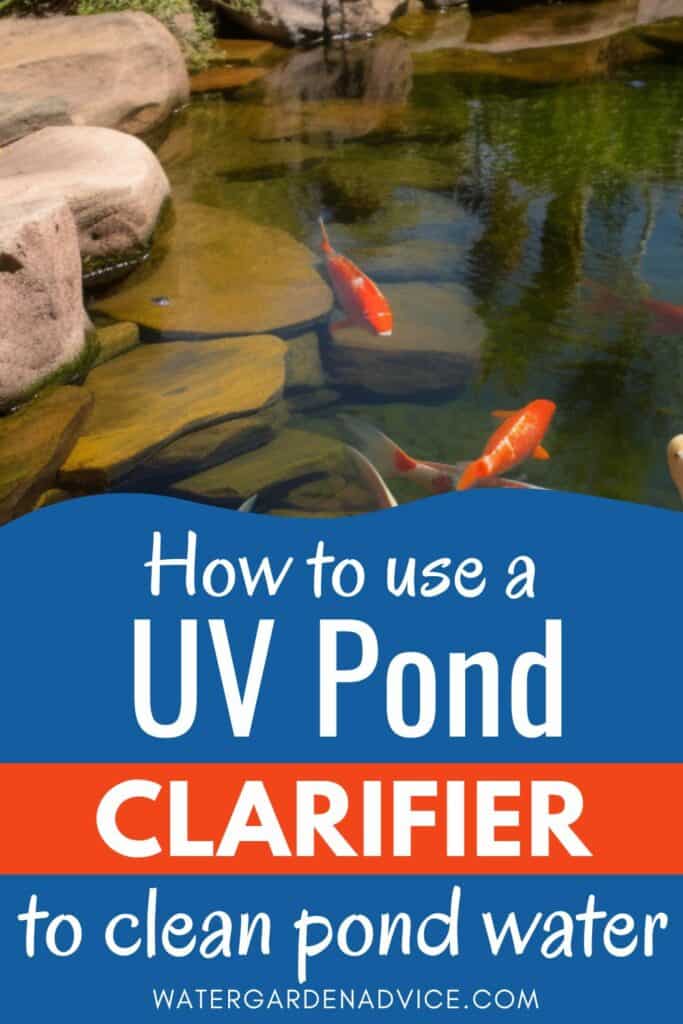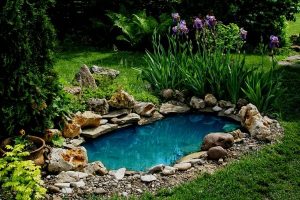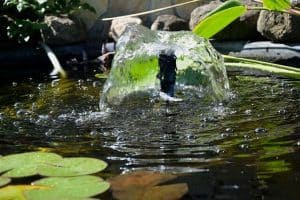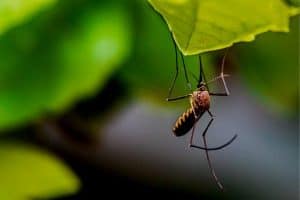Installing a UV pond clarifier is an effective and eco-friendly way to keep your pond water clear and healthy.
These innovative devices use ultraviolet light to kill algae and other harmful microorganisms to keep pond water clean and crystal clear.
But how do UV pond clarifiers work, and what are the benefits of using them?
In this article I’ll explore the science behind UV pond clarifiers and explain how they can help you achieve a beautiful and healthy pond.
This post contains affiliate links. Please read the disclosure for more info.
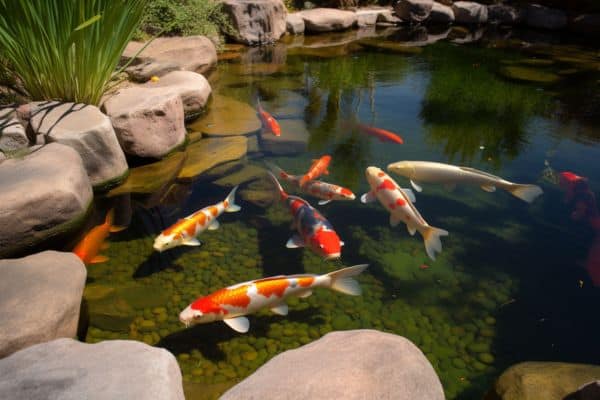
How A Pond UV Clarifier Works
UV clarifiers help to maintain clear and healthy pond water by exposing the water to ultraviolet (UV) light, which kills single-celled algae and other microscopic organisms that cloud the water.
As the pond water passes through the UV pond clarifier, the UV light damages the DNA of the algae and other unwanted microorganisms.
This damage prevents them from reproducing and eventually leads to their death.
As a result, the green pond water clears up and becomes less susceptible to algae blooms.
One of the critical factors affecting the performance of a UV pond clarifier is the flow rate of water passing through the device.
To achieve efficient sterilization, you’ll need to ensure that the pond water has enough contact time with the UV light.
Adjust the flow rate according to the manufacturer’s recommendations for optimal efficiency.
In addition to killing algae and microorganisms, UV pond clarifiers also serve as an extra layer of protection for your pond’s filtration system.
They reduce the load on your mechanical and biological filters, so they can work more efficiently and improve overall water quality.
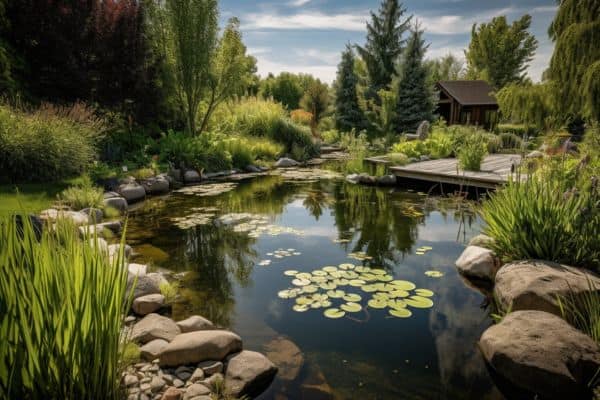
Key Parts of A Pond UV Clarifier
The UV bulbs emit ultraviolet light that targets algae and other harmful microorganisms in your pond water.
Over time, these bulbs may lose their efficiency and need to be replaced to ensure optimum performance.
The quartz sleeve is another crucial component that encases the UV bulb to protect it from water while allowing the ultraviolet light to pass through.
It keeps the bulb dry and prevents any contact between the electrical components and water.
Make sure to clean the quartz sleeve regularly, because any build-up of dirt or algae will affect the efficiency of the UV light.
Water flows through the UV clarifier with the help of a pump.
It’s essential to choose the right pump size and flow rate compatible with your clarifier to ensure optimal water circulation.
A properly functioning pump is necessary to ensure an efficient and continuous flow of water for the UV clarifier to treat.
Maintenance and Cleaning
Periodically check the UV bulb and replace it once a year or according to the manufacturer’s recommendations.
This will ensure that your pond clarifier works at its best to reduce green water and keep the pond ecosystem healthy.
Another key aspect of maintenance is cleaning any accumulated sludge and debris from the clarifier.
This can usually be done by opening the unit and carefully removing built-up sludge or algae using a soft cloth or brush.
Be mindful of fingerprints, as they can affect the performance of the UV bulb.
After cleaning, reassemble the unit and ensure that all parts are securely tightened.
In addition to cleaning the UV clarifier itself, it’s essential to maintain the overall filtration system.
Regularly clean or replace the filter media, as clogged filters can decrease the efficiency of your UV clarifier and contribute to poor water quality.
Keeping the flow rate through the clarifier optimal is important too; moving half your pond volume through the clarifier every hour is ideal.
Lastly, remember to perform regular visual inspections of your pond to identify any potential issues or early signs of water quality problems.
Frequently Asked Questions
Do UV Clarifiers Remove String Algae?
String algae are a type of filamentous algae with long, hair-like strands.
They can grow on the pond’s surface, on rocks, and water features, forming a dense, green mat.
Unlike single-celled algae, string algae can’t be removed by a UV clarifier, so you’ll have to use an algaecide or remove it manually to get rid of it.
What is the best placement for a UV clarifier in a pond setup?
The best placement for a UV clarifier in a pond setup is generally right after the mechanical or biological filter.
This setting ensures that the water has already been filtered before it goes through the UV clarifier, so the UV light will be more effective in killing the algae.
The pump gets the pond water to the UV clarifier/sterilizer, and the filter takes care of removing the dead algae.
Do UV clarifiers have any impact on beneficial pond bacteria?
UV clarifiers primarily target single-celled organisms like algae and do not significantly impact beneficial pond bacteria.
This is because beneficial bacteria are usually attached to surfaces within the pond, such as rocks, plants, and filter media, rather than being suspended in the water.
Since the UV light only comes into contact with water passing through the clarifier, it should have minimal effect on the healthy bacteria in your pond.
How long does it take for a UV clarifier to work?
It can take anywhere from a few days to a couple of weeks for a UV clarifier to completely clear up pond water, depending on the severity of the algal bloom and the flow rate of the UV clarifier.
How long should a UV clarifier be kept on in a pond?
For optimal results you should keep your UV clarifier running continuously, 24 hours a day.
This constant operation ensures that the water is consistently treated and helps to maintain good water quality.
RELATED ARTICLES
- How to Keep Pond Water Cool in Summer
- How To Fix Green Pond Water
- How to Reduce Pond Water Evaporation
- How To Make Your Pond Water Clear Blue
- Winter Pond Maintenance
So that’s my take on pond UV clarifiers and how they can help to clear your pond water.
Are you on Pinterest? I have boards dedicated to Garden Ponds and Pond Maintenance that you may find interesting.
